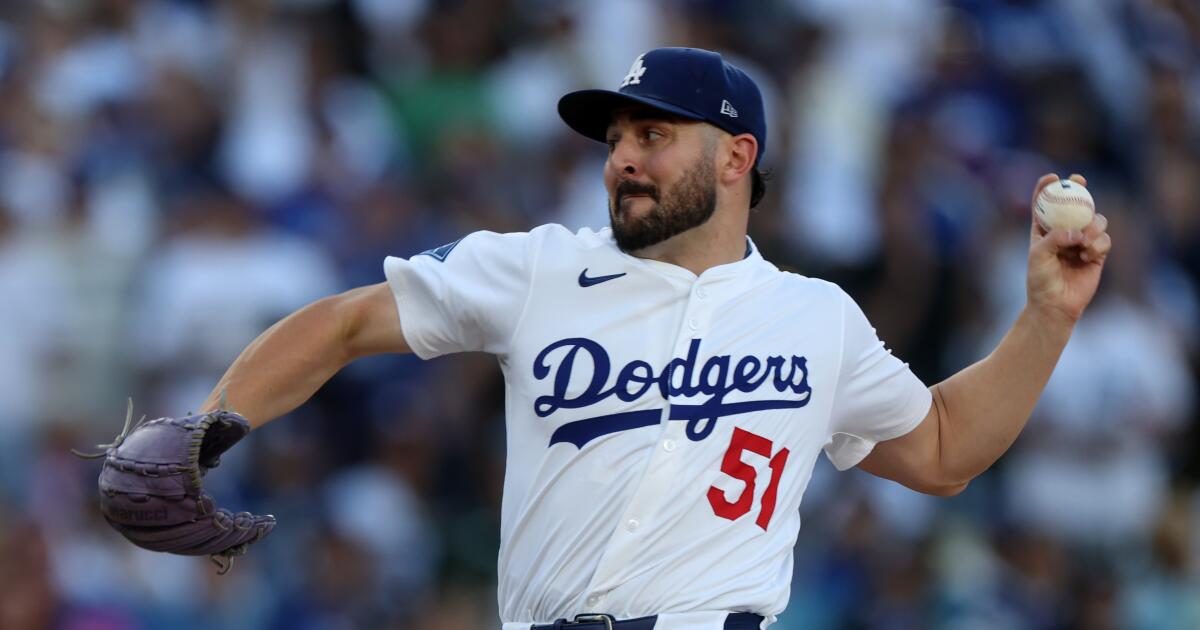Dodgers’ Alex Vesia and his wife mourn death of baby daughter
Dodgers pitcher Alex Vesia and his wife, Kayla, announced on Instagram on Friday that their baby daughter, Sterling, died on Oct. 26 — a tragic loss that caused Vesia to miss the Dodgers’ appearance in the World Series last week.
“Our little angel, we love you forever & you’re with us always,” the Vesias wrote. “There are no words to describe the pain we’re going through but we hold her in our hearts and cherish every second we had with her.”
The Vesias had been expecting the birth of Sterling, their first child, during the Dodgers’ postseason run. Her death came during the World Series, forcing Vesia to step away from the club.
The day before Game 1 of the World Series, the Dodgers publicly announced Vesia was not with the team because of a “deeply personal family matter.” The Dodgers left him off their World Series roster, as well as the family medical emergency list, so as not to pressure him into feeling he needed to return.
“This is so much bigger than baseball,” Dodgers president of baseball operations Andrew Friedman said at the time. “And for us, it was doing whatever small part we could to just 100% be supportive.”
The Dodgers’ bullpen honored Vesia in Game 3 of the World Series, with each reliever writing his No. 51 on the sides of their caps for the rest of the series. The Toronto Blue Jays’ relievers did the same in Games 6 and 7, a gesture several Dodgers publicly recognized and deeply appreciated.
“I think it really speaks to the brotherhood of athletes, major league baseball players,” said Dodgers manager Dave Roberts ahead of Game 7. “Baseball is what we do, but it’s not who we are. And for these guys to recognize Alex and what he and Kayla have gone through — ‘heartbreaking’ is not even a good enough descriptor.”
“For those guys to do that, it’s incredible,” outfielder Kiké Hernández added. “They’re trying to win a World Series, but they understand that this is — life is bigger than baseball, and baseball’s just a game. For them to do that with the stakes where we’re at, hats off to them, and I want them to know that we appreciate ‘em.”
The Vesias also thanked the Dodgers, Blue Jays and baseball fans for their support.
“Our baseball family showed up for us and we wouldn’t be able to do this without them,” they wrote. “We have seen ALL your messages, comments and posts. It’s brought us so much comfort.”
Vesia was a key part of the Dodgers’ bullpen in both the regular season (when he had a 3.02 ERA in a career-high 68 appearances) and the first three rounds of the playoffs (when he allowed just two runs in seven outings).
On Thursday, the Dodgers picked up Vesia’s $3.65-million option for next season, avoiding arbitration before what will be his final year before reaching free agency.
